How To Fix Hair Breakage At The Crown
There must be some really interesting reasons for the broken hair strands you find in the shower.
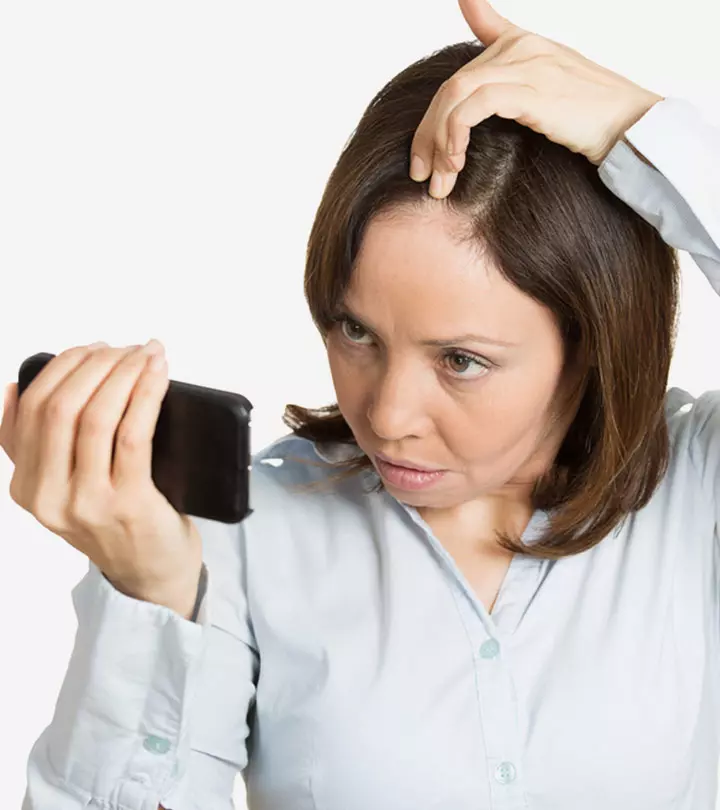
Image: Shutterstock
Hair breakage at the crown is more common than on any other area of your head. This is where hair follicles undergo a lot of tension. The hair strands undergo a lot of stress and are very dry and brittle on the scalp. But worry not, as this condition can be reversed most often. This article explores the causes of hair breakage at the crown, how to identify it, and some tips for possibly reversing it. Keep reading to know more.
In This Article
Causes Of Hair Breakage At The Crown
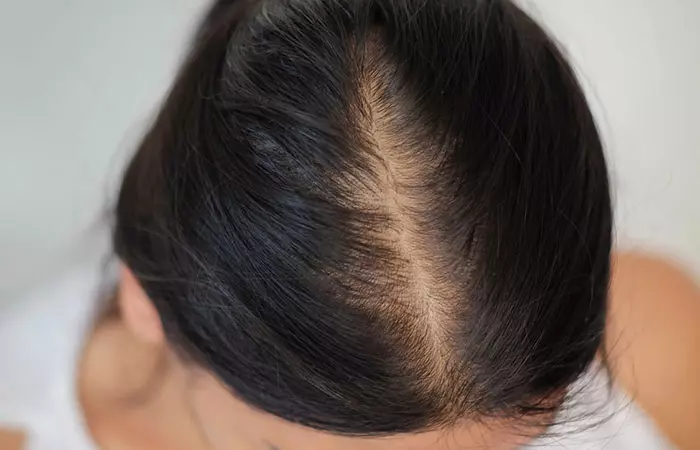
1. Sectioning Your Hair
The way you part your hair can cause breakage at the crown. Every time you style your hair, you split your hair into sections, and your hair is being pulled down and away from the crown. The repeated tension on the hair follicles in this area could eventually lead to hair breakage. Even using a pick to fluff your hair on the crown area for volume can lead to breakage.
Try periodically switching the sides you part your hair. Also, be sure to incorporate protective styles into your hair care regimen.
2. Insufficient Moisture

One common cause of hair breakage is lack of moisture. Most people forget their crown area when their hair is braided up or pulled back in style. But it is important to pay attention to this area to avoid breakage. The crown area has high porosity. Hence, section it out and moisturize it daily to keep your hair soft and supple.
The hair on the crown area is drier and coarser than the rest of the hair. Hence, it has more difficulty retaining moisture. This leads to breakage. The crown area is exposed the most to the environment, and lack of proper conditioning can cause hair breakage. Using alkaline shampoos can also cause dryness and frizz and cause breakage (1).
Apply an extra amount of your moisturizing (thicker and creamy) product to your crown section.
3. Hairstyle That Is Too Tight
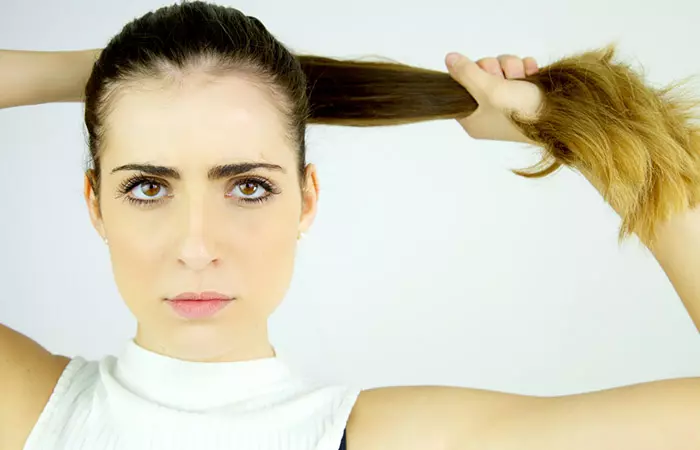
Tight ponytails, or pulled-back hairstyles like puffs and hair buns, can cause hair breakage at the crown. A study published in the Journal Of The American Academy Of Dermatology found that tight hairstyles like cornrows, ponytails, and braids can cause traction alopecia (hair loss caused by tightly pulling hairstyles), leading to hair breakage in African American girls (2). These hairstyles put a lot more stress on the hair follicles. Constant tension and manipulation of the same areas on your scalp can also lead to breakage. Constantly picking the hair at the crown of your head for volume can also cause breakage.
 Quick Tip
Quick TipTry fluffing with your hands or a wide-toothed comb that can take on denser roots. Try different hairstyles to minimize this issue.
4. Excessive Heat Styling
The crown of our head is the most exposed part and is often the very first area to get dried out. It can receive a lot more heat from heat-styling tools like dryers. The heat-styling tools with high-temperature settings can cause hair breakage. If you are blow-drying your hair, make sure its roots are protected from excess heat. Remember to use the cool-shot setting. Research published in the Journal Of Cosmetic Dermatology studied how heat from flat irons affects Caucasian and Asian virgin hair. Heating hair to 237°C made it lose moisture, release gases, and damage its proteins. Asian hair showed more protein loss than Caucasian hair. The heat damaged the hair cuticle and changed its protein structure (3). So, make sure your dryer circulates heat well and that you can adjust your heat settings as needed.
5. Chemical Hair Treatments
Opting for chemical hair treatments frequently can also lead to hair breakage at the crown. The chemicals in relaxers and colors can weaken the hair shaft and cause hair breakage. Regular use of chemical hair straighteners may also lead to hair loss (4). One of the main reasons your hair is prone to breakage is that these chemicals strip your strands of moisture, making them dry and brittle. Other strong-hold chemicals in hair products and your immediate environment, like chlorine in swimming pools, can damage hair. Hence, you need to use hair products with moisturizing ingredients like jojoba oil and coconut oil to replenish the lost moisture and strengthen your strands. Avoid products with parabens and sulfates and adhere to a regular hair care routine to achieve shiny, healthy locks.
Lesley, a blogger, spoke about the different causes of hair breakage such as rough handling, tight hairstyles, combing wet hair, and chemicals. She said, “Of course, there are other ways that breakage can occur but these are the main ways I’ve noticed (i).”
Key Takeaways
- Pulled-back hairstyles like puffs and hair buns or even tight ponytails can cause hair breakage at the crown.
- The tapered and weak hair strands can result in hair breakage and thinning.
- When applying hair products, separating your hair into smaller sections can ensure adequate moisture and protein to all the strands.
How To Identify Hair Breakage At The Crown?
- Thinning Of Hair
Have a close look at the crown of your head. Are the hair strands on your crown shorter than those on the other parts of your head? Do you notice any thinning or balding on your crown? These are signs of hair breakage at the crown. The tapered and weak hair strands lead to breakage and eventually lead to hair thinning.
- Soreness
Soreness on the crown is another sign of hair breakage. This soreness could be caused due to the tension placed on your follicles. The sores can also result from pulled-back hairstyles that create stress on your scalp.
Why Does Your Crown Area Have Different Porosity?
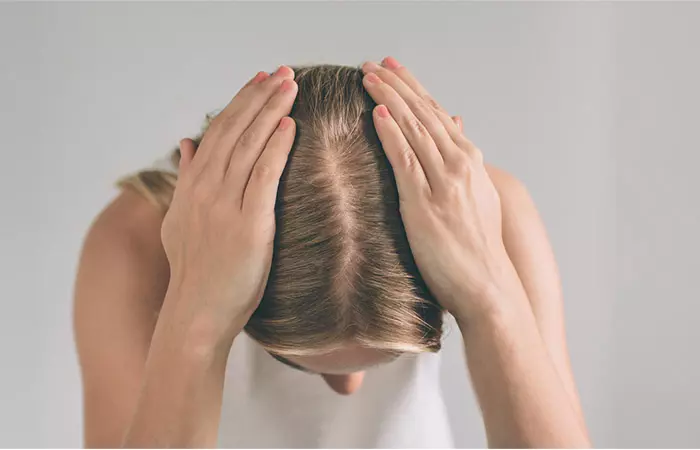
The crown area gets exposed to more heat from the sun daily. This constant heat exposure could increase porosity and cause hair damage. High porosity is also caused by heat damage from blow dryers, flat irons, and curling irons. Think of your hair like a sponge. Constant sun exposure and heating tools, like blow dryers and flat irons, can poke holes in the sponge. So while the sponge does absorb moisture, it also loses it quickly. So, you should moisturize your hair more frequently and stop using heating tools for some time. Always cover your hair when heading out in the sun.
Hair breakage at the crown can get embarrassing if not addressed in time. We have discussed a few tips that can help with the same.
Tips For Repairing Hair Breakage At The Crown
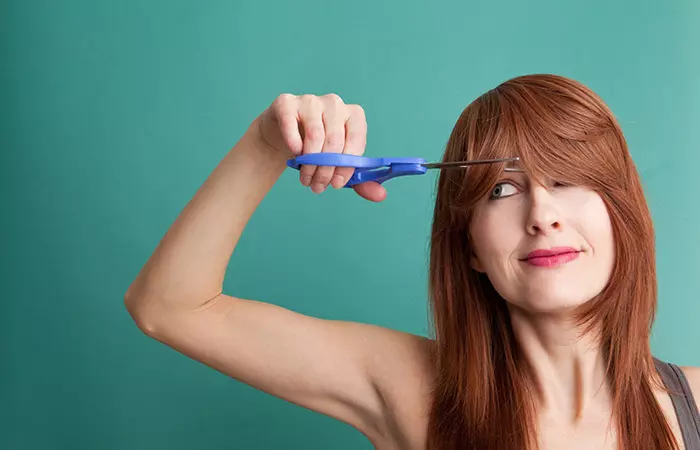
- Trim Your Hair
There is no point in letting those split ends and broken hair strands stay at the crown of your head. Trimming your hair is the best way to deal with breakage. It also encourages healthy hair growth.
 Quick Tip
Quick Tip- Regular Spa Massages
Massaging your scalp helps stimulate blood flow that also may promote hair thickness, and growth (5), (6). Add to the massage a hair oil that contains ingredients beneficial for hair growth and moisture. For added benefit, you can also dilute essential oils of lavender or peppermint in carrier oils like almond, coconut, or grapeseed oils. Use coconut or argan oil to add deep moisture to dry hair. For oily scalps, opt for lightweight oils like grapeseed. Curly hair benefits from shea butter-based products, while fine hair does well with aloe-based sprays for lightweight hydration.
The survey had a total of 340 respondents, which accounted for 17.9% of all the people who took part. Out of those who completed the survey, 327 individuals, representing 17.2% of the respondents, stated that they had tried standardized scalp massages (SSMs). Among the SSM participants, the majority (68.9%) reported that their hair loss either stabilized or showed signs of regrowth. The participants engaged in SSMs for an average of 6-7 months, dedicating 11 to 20 minutes each day to these massages. The amount of time spent on massages daily, the duration of the massages in months, and the overall effort invested in massaging are calculated by multiplying the daily minutes by the number of months and were all positively related to how the participants perceived changes in their hair. On average, 68.9% of participants noticed improvements in their hair after approximately 36.3 hours of massaging effort. In other words, 7 out of 10 people showed hair growth and reduced hair fall.
Separate your hair into smaller sections when applying products to ensure all of your strands are getting their share of moisture and/or protein. Remember to use hair styling products that are moisturizing and easy to distribute from the roots to the ends.
- Get A humidifier
The sudden transition in temperatures can zap moisture from your tresses in winters. A room heater can provide warmth when the temperature drops. But it can also dry the air inside your room, damaging your hair. The crown is more likely to dry out first. A humidifier helps balance the moisture levels inside a room and prevent this dryness.
- Use Satin Pillowcases
Cotton pillowcases can make your hair messy and tangled in the mornings. But satin and silk fabrics are soft and cause less friction. Opting for satin and silk pillowcases will help keep your hair healthy (7). These materials also prevent split ends and tangled hair.
Now that you know how to reverse hair breakage at the crown, it’s time you learn how to prevent the issue from recurring. Check out the next section to learn more!
Preventive Measures For Hair Breakage At The Crown
Here are some tips for you to keep in mind to avoid hair breakage at the crown:
- Moisturize Regularly: Keep your hair hydrated with leave-in conditioners, oils, or serums to prevent dryness and breakage.
- Massage Your Scalp: Massage your scalp with a hot oil treatment at least once a week for 5-10 minutes to avoid hair thinning, weakening, or breakage. Massage your scalp with your fingertips in small, gentle but firm circular motions.
- Avoid Tight Hairstyles: Choose relaxed hairstyles that reduce unwanted tension on the crown, as tight buns, braids, or ponytails can cause breakage.
- Limit Heat Styling: Reduce the use of heat styling tools to prevent damage. Use a heat protectant whenever you do use them to prevent breakage.
- Protect From Environmental Stressors: Wear hats or scarves to protect your hair from sun exposure, wind, and pollution that can weaken hair at crown.
- Minimize Chemical Treatments: Avoid frequent use of harsh chemicals like relaxers, perms, or dyes that weaken hair and lead to breakage at the crown.
Infographic: Effective Tips To Fix Hair Breakage At The Crown
Factors like the use of heat styling tools or tight hairstyles along with excessive hair treatments can cause hair breakage at the crown. To help you out, we have rounded up the most effective tips you should start practicing right away to make your hair happy and healthy. Check out the infographic below to know more. Illustration: StyleCraze Design Team
Hair breakage at the crown is a common hair issue that most of us face. It happens when you section your hair, due to decreased hair moisture, tight hairstyles like high ponytails, and too much heat styling. To learn how to stop hair breakage effectively, start by checking for signs such as hair thinning and/or soreness in the area. The hair at the crown is exposed to pollution and UV rays on a daily basis. This affects the health of the hair in that area. The best way to strengthen the hair at the crown is to keep it moisturized. Scroll back up and check out the additional hair tips you can follow to keep your hair looking strong and beautiful!
Frequently Asked Questions
Why does my hair separate into sections at the top?
Khamis Maiouf, a hair stylist, says, “Your hair might be separated into sections at the top due to a number of factors. It could be caused by using products that are too heavy, using too much heat, or using the wrong type of brush. It could also be caused by a lack of hydration or a lack of natural oils in the scalp.”
What is trichonodosis?
Maiouf says, “Trichonodosis is a condition that affects the scalp and causes the hair to break off in patches or clumps. It is caused by a type of fungus that grows on the scalp and can be triggered by stress, poor nutrition, hormonal changes, and other environmental factors. It is usually treated with medicated shampoo and topical creams.”
What vitamin is good for hair breakage?
Vitamins C, D3, and B7 (biotin) can improve your hair health, making your tresses strong. Vitamin C increases collagen production, vitamin D3 increases keratin production, and biotin stimulates healthy hair growth.
Does brushing hair cause breakage?
Yes, brushing your hair too much or too vigorously can cause hair breakage. Using the wrong brush for your hair type may also cause hair breakage, especially in curly hair. If you don’t brush your hair regularly, knots can form in your hair. Your hair may break or split when trying to untangle these stubborn knots.
How long does it take for hair breakage to stop?
If you are taking the right precautions and using the correct products, you should begin to see some minor improvement in your hair texture in 2-3 months. You may notice a reduction in hair breakage in 6-8 months.
What foods help hair breakage?
You should eat foods like whole grains, leafy greens, fruits, vegetables, and nuts that are filled with proteins, vitamins, minerals, and fatty acids that improve your hair’s health and make it stronger. Avoid fat-heavy and sugary foods.
How can you tell the difference between hair breakage and hair loss?
Hair loss occurs at the root or hair follicle. Hair breakage occurs anywhere along the hair shaft.
Does stress cause hair breakage?
Yes, stress may cause hair loss and breakage. Some people deal with obsessive habits arising from stress and anxiety. These obsessive habits may cause them to pick at their hair, leading to hair breakage. Stress can also impact your hair health, causing your tresses to thin out, leading to reduced elasticity and hair breakage.
Can lack of vitamin D cause hair breakage?
A vitamin D deficiency may cause the hair strands to thin out, which can lead to hair breakage.
Can hormones cause hair breakage?
Some hormones (like dihydrotestosterone) may cause a deterioration in hair health, leading to hair thinning, breakage, and loss.
Are you struggling with hair breakage at the crown? Learn how to stop it and keep your hair healthy by checking out this video.
Personal Experience: Source
StyleCraze's articles are interwoven with authentic personal narratives that provide depth and resonance to our content. Below are the sources of the personal accounts referenced in this article.
(i). 5 REASONS YOUR HAIR IS BREAKINGhttps://freshlengths.blogspot.com/2014/02/5-reasons-your-hair-is-breaking.html
References
Articles on StyleCraze are backed by verified information from peer-reviewed and academic research papers, reputed organizations, research institutions, and medical associations to ensure accuracy and relevance. Read our editorial policy to learn more.
- The Shampoo pH can Affect the Hair: Myth or Reality?
https://www.ncbi.nlm.nih.gov/labs/pmc/articles/PMC4158629/ - Hair care practices and their association with scalp and hair disorders in African American girls
https://pubmed.ncbi.nlm.nih.gov/20728245/ - Heat-damaged evaluation of virgin hair
https://pubmed.ncbi.nlm.nih.gov/30861299/ - Effects of chemical straighteners on the hair shaft and scalp⋆
https://www.ncbi.nlm.nih.gov/pmc/articles/PMC9073307/ - Standardized Scalp Massage Results in Increased Hair Thickness by Inducing Stretching Forces to Dermal Papilla Cells in the Subcutaneous Tissue
https://www.ncbi.nlm.nih.gov/labs/pmc/articles/PMC4740347/ - Self-Assessments of Standardized Scalp Massages for Androgenic Alopecia: Survey Results
https://link.springer.com/article/10.1007/s13555-019-0281-6 - The art of prevention: It’s too tight—Loosen up and let your hair down
https://www.ncbi.nlm.nih.gov/labs/pmc/articles/PMC8072502/
Read full bio of Dr. Shruti Chavan
- Khamis Maiouf is a professional hairstylist with over 20 years of experience. He helps his clients achieve consistently attractive haircuts, discover the coolest hairstyles, and find the best hair products.
 Khamis Maiouf is a professional hairstylist with over 20 years of experience. He helps his clients achieve consistently attractive haircuts, discover the coolest hairstyles, and find the best hair products.
Khamis Maiouf is a professional hairstylist with over 20 years of experience. He helps his clients achieve consistently attractive haircuts, discover the coolest hairstyles, and find the best hair products.
Read full bio of Arshiya Syeda
Read full bio of Ramona Sinha
Read full bio of Medha Deb






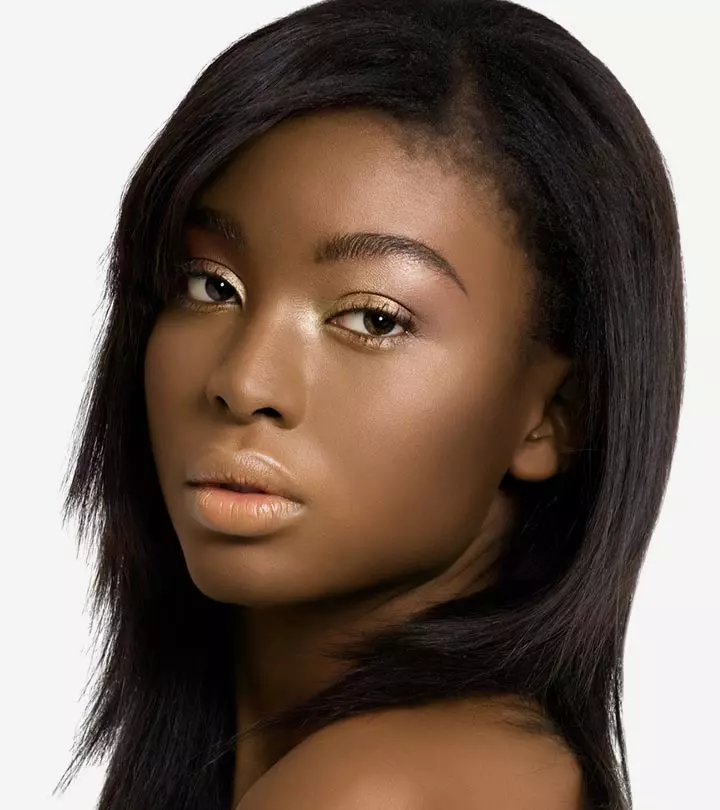

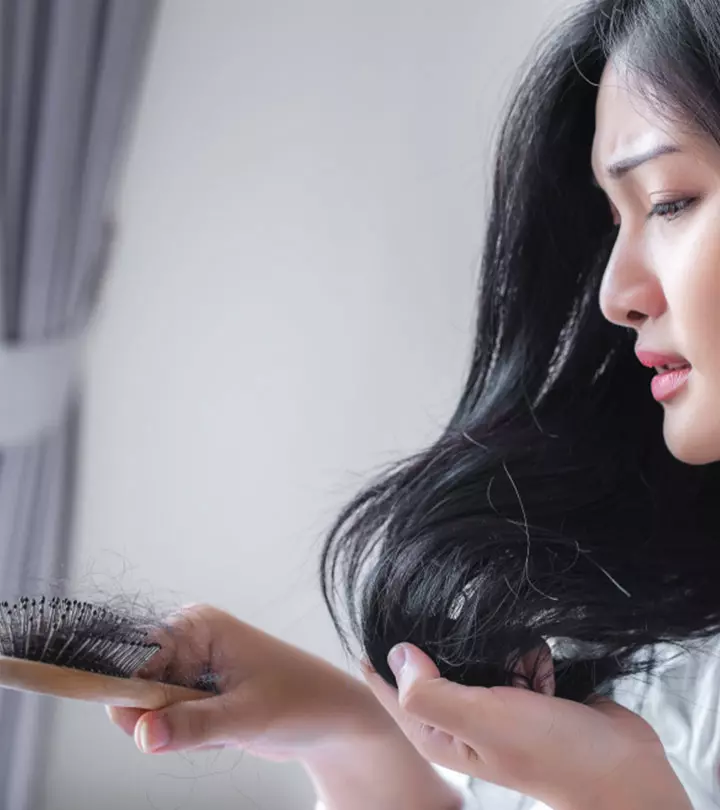
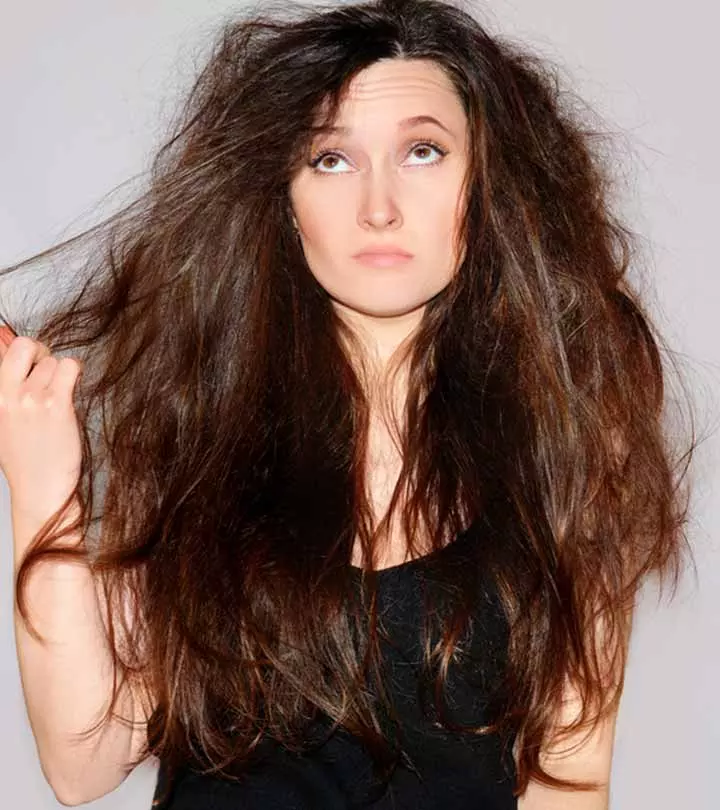

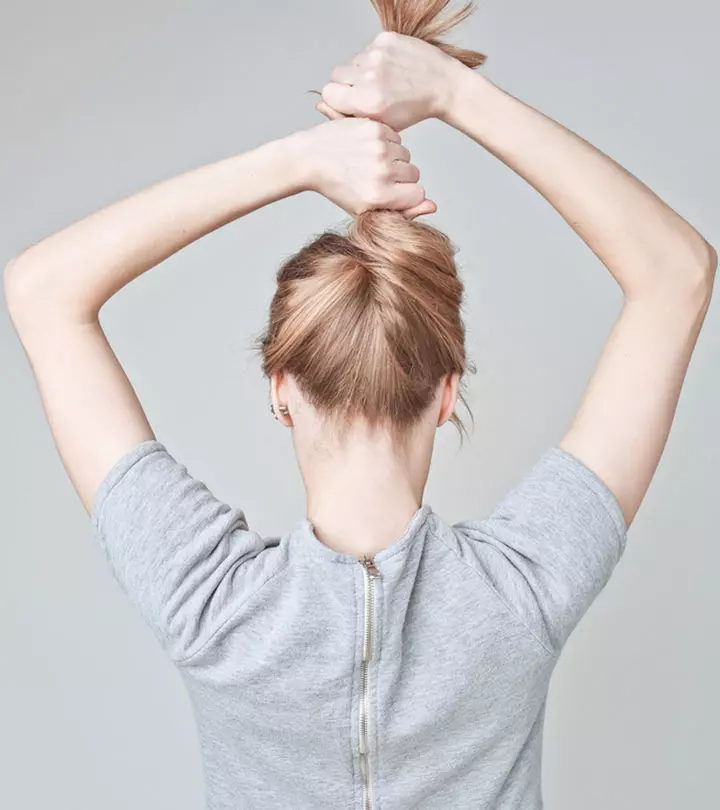



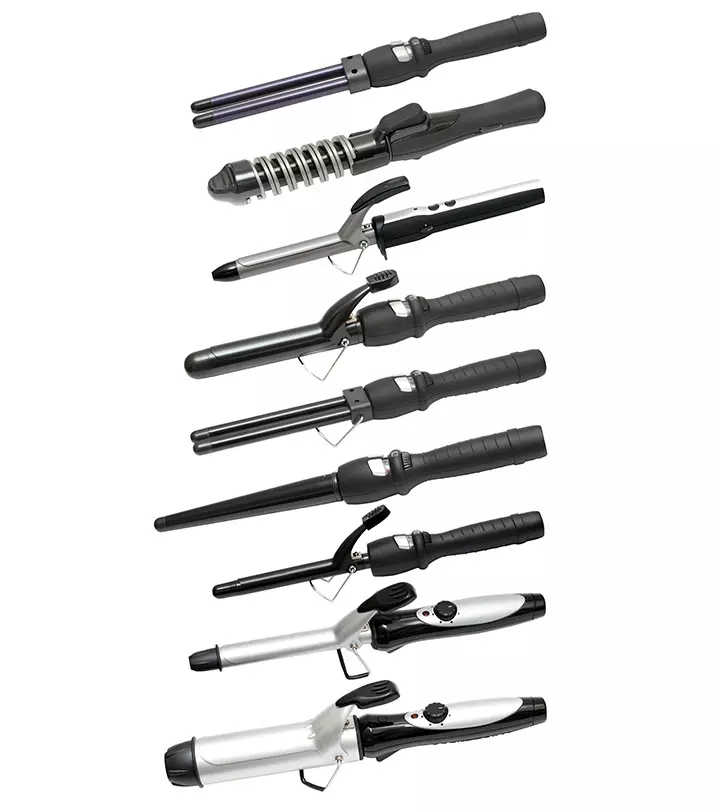


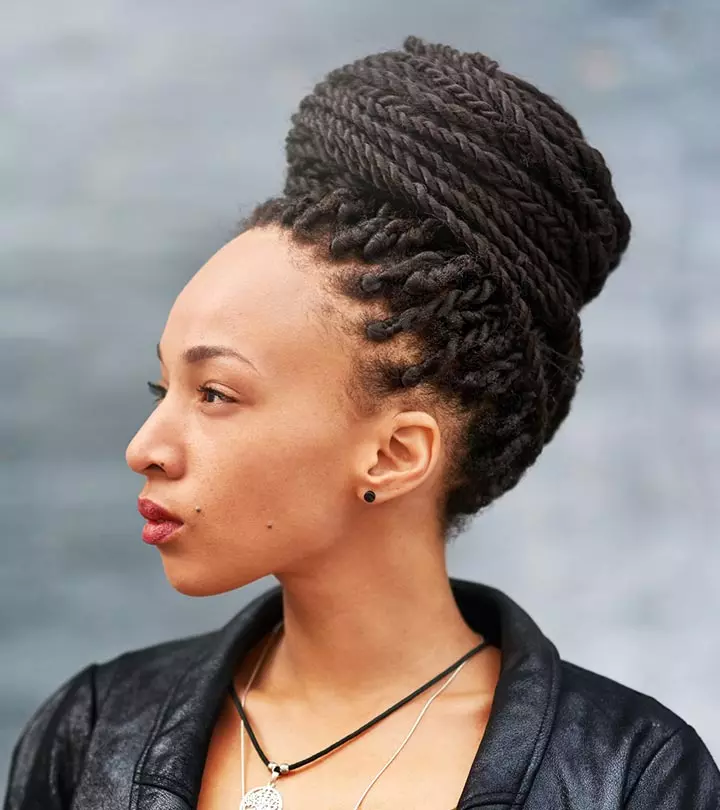
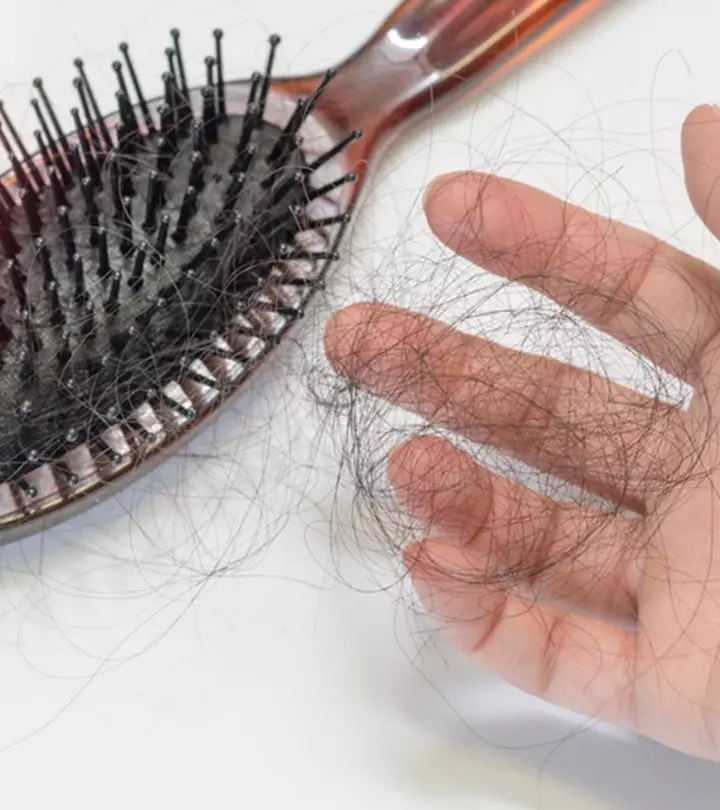


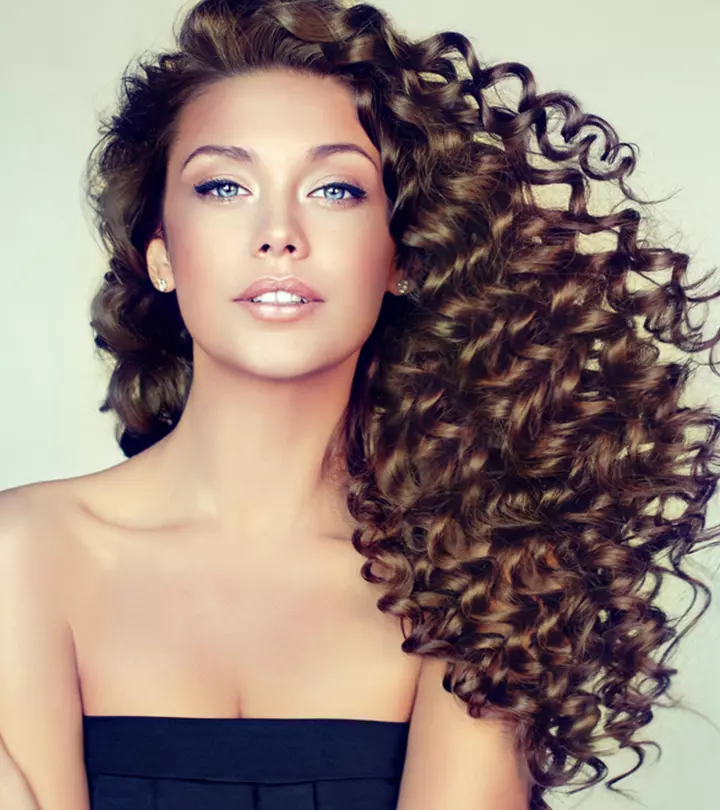

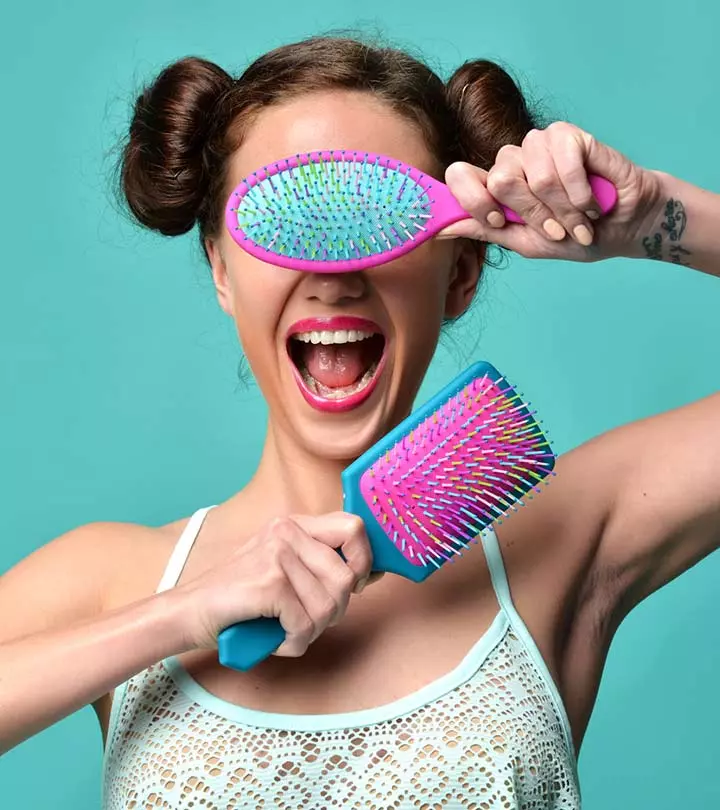
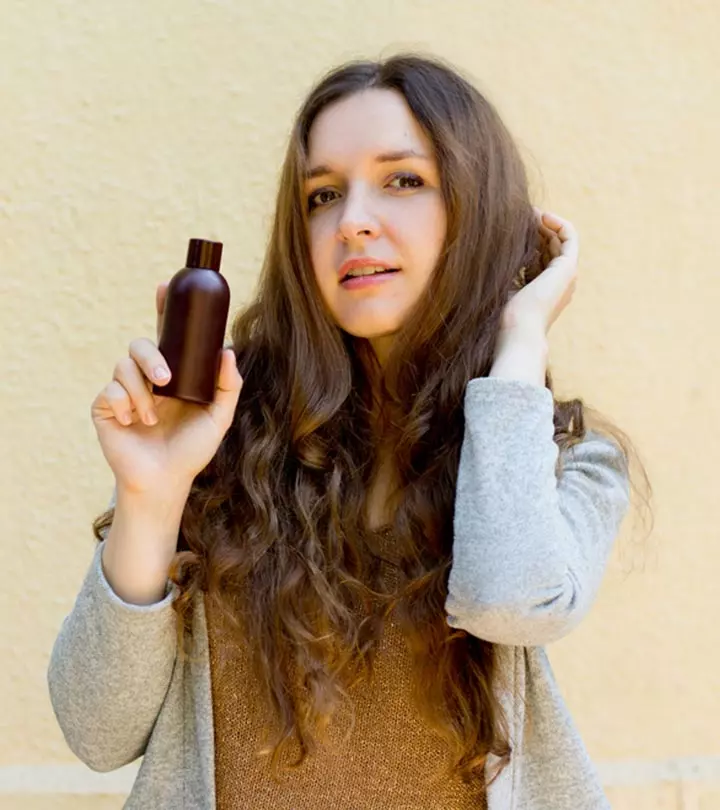
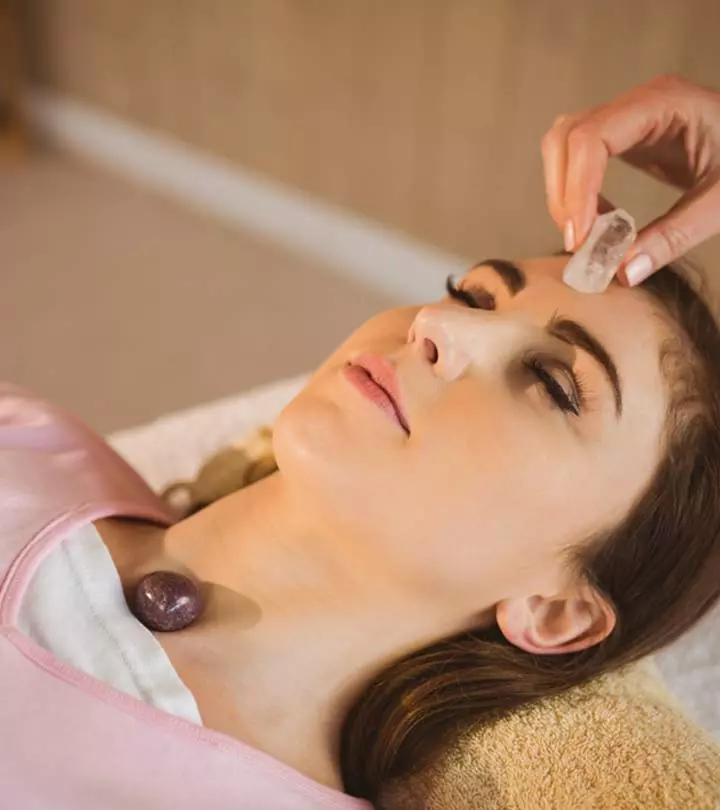
Community Experiences
Join the conversation and become a part of our empowering community! Share your stories, experiences, and insights to connect with other beauty, lifestyle, and health enthusiasts.